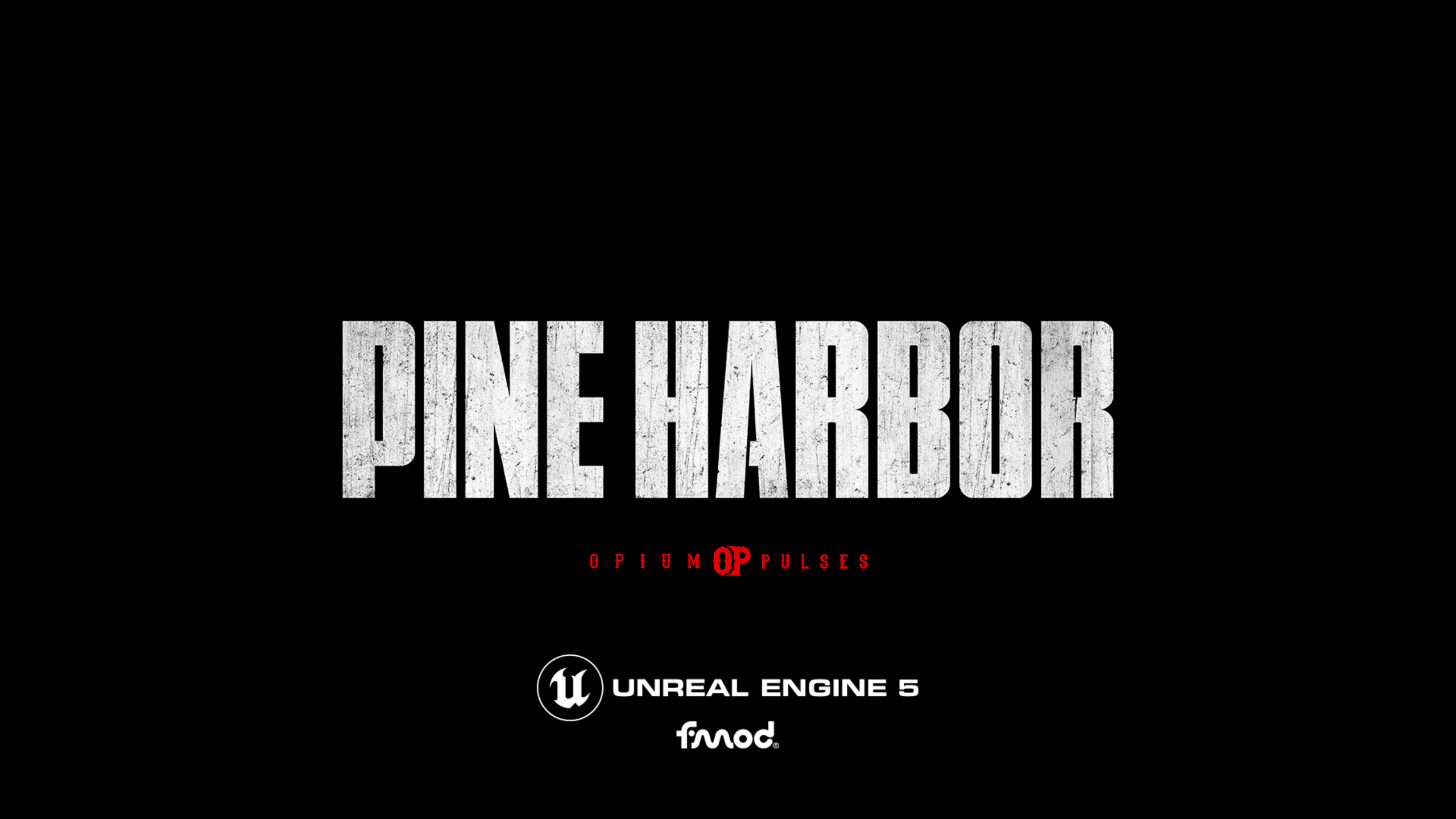The air brakes hiss in disdain as the long commuter bus slowly grinds to a stop. The thick, dense fog is an oppressive companion the moment your feet touch the worn, neglected asphalt as you depart the safe metal shell of the vehicle. The door squeaks a menial farewell as its inner arm extends, the bus eliciting a chirp as it’s brakes hiss once more. It rolls away with unexpected vigor: The driver had no desire to linger, let alone to really bring you here in the first place- to Pine Harbor. It was all too eerie. Too quiet. A desolate, abandoned town of times past, shrouded in mystery and fog- nothing is quite as it appears. You’re here for answers, however, and you’ll be damned to walk away empty handed, no matter the cost.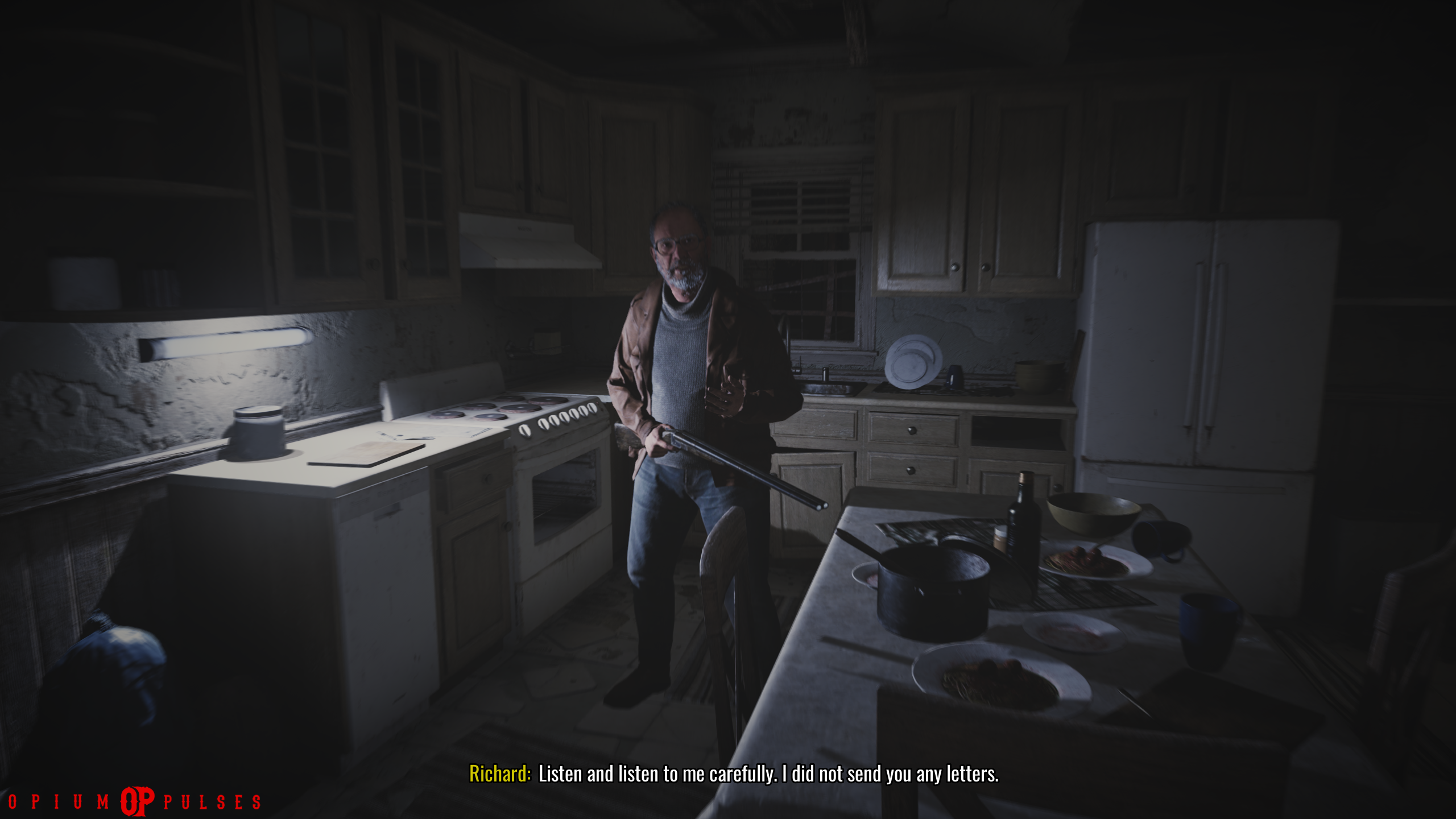 Then... who did?
Then... who did?
At first glance, it is glaringly obvious that Pine Harbor is modeled to be what one might call a “spiritual successor” to games running along the same vein as classic Silent Hill. On some level, I feel that Vision Forge Team has accomplished that feat, swimmingly. Boasting a humble price tag of $14.90 USD, for what at first glance appears to be an exceedingly well-polished AA game that threatens to show case some AAA features- polished graphics, detailed scenery and well rounded user interface, I was more than excited to jump in, my expectations struggling to be contained. However, just as it’s namesake, I found that Pine Harbor was not quite all as it appears.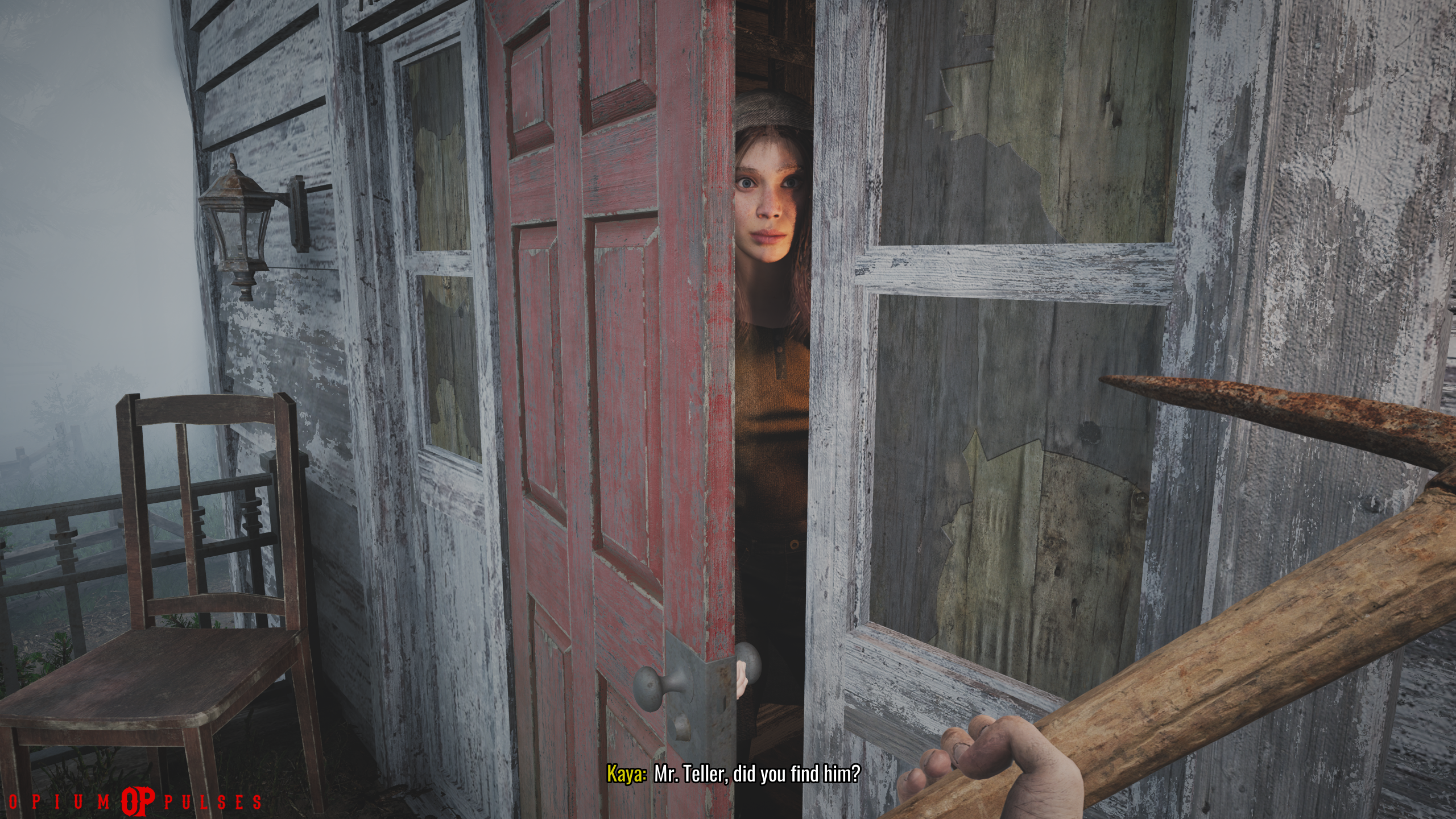 What exactly IS going on, here?
What exactly IS going on, here?
As you step out of the safety of the bus, and into the abandoned town of Pine Harbor, you have what appears to be very little direction. You need to find your father- he will explain everything. While curiosity may pull you deep into the towns misty streets, you will find yourself unable to give in to your most intrusive of thoughts, as the bane of many-a-gamers existence, the notorious Invisible Walls, thwart your each and every attempt. Perhaps we were indeed given more “direction” than initially suspected. You have only one choice: up the path- to house number 11.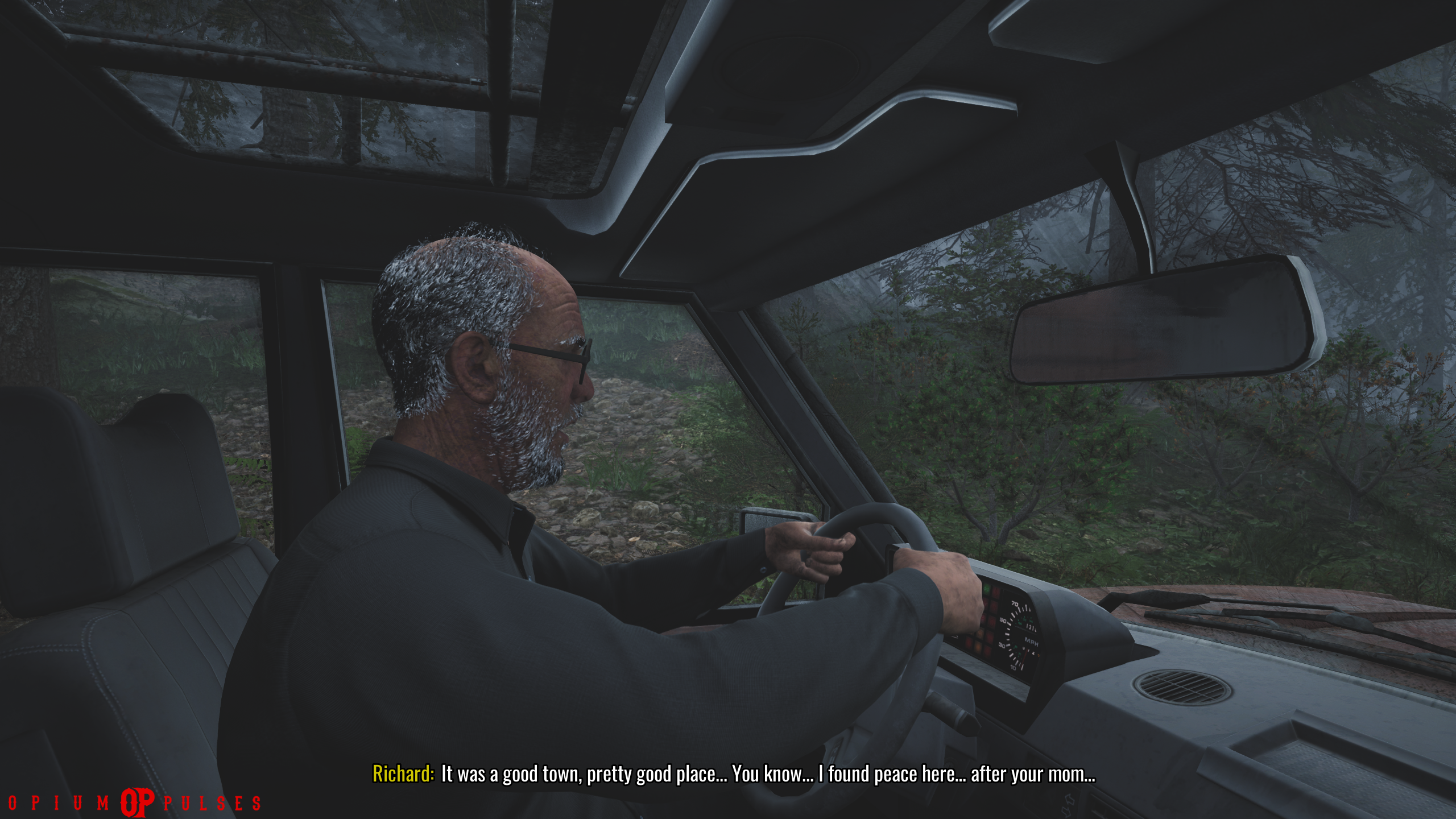 Richard shows you around what is left of Pine Harbor.
Richard shows you around what is left of Pine Harbor.
Once you clear your obligatory (and somewhat cliché) “Welcome to Pine Harbor” guided tour, you are given much more freedom to explore what remains of the town itself- Magical Invisible Walls lifted. That is not to say you are not met without some form of restriction of what paths you can and cannot take: You are unable to jump. This was one of my initial points of contention with Pine Harbor. As you navigate the town and it’s many streets and back alleys, you’ll see a lot of places that LOOK as though they may be a trove of resources, but with no real way to navigate- or further explore, for that matter. Buildings and alleyways beg for your to explore, but you are only able to do so at a menial surface level. Indoor exploration is highly curated so far, only providing a small selection of areas to really delve into.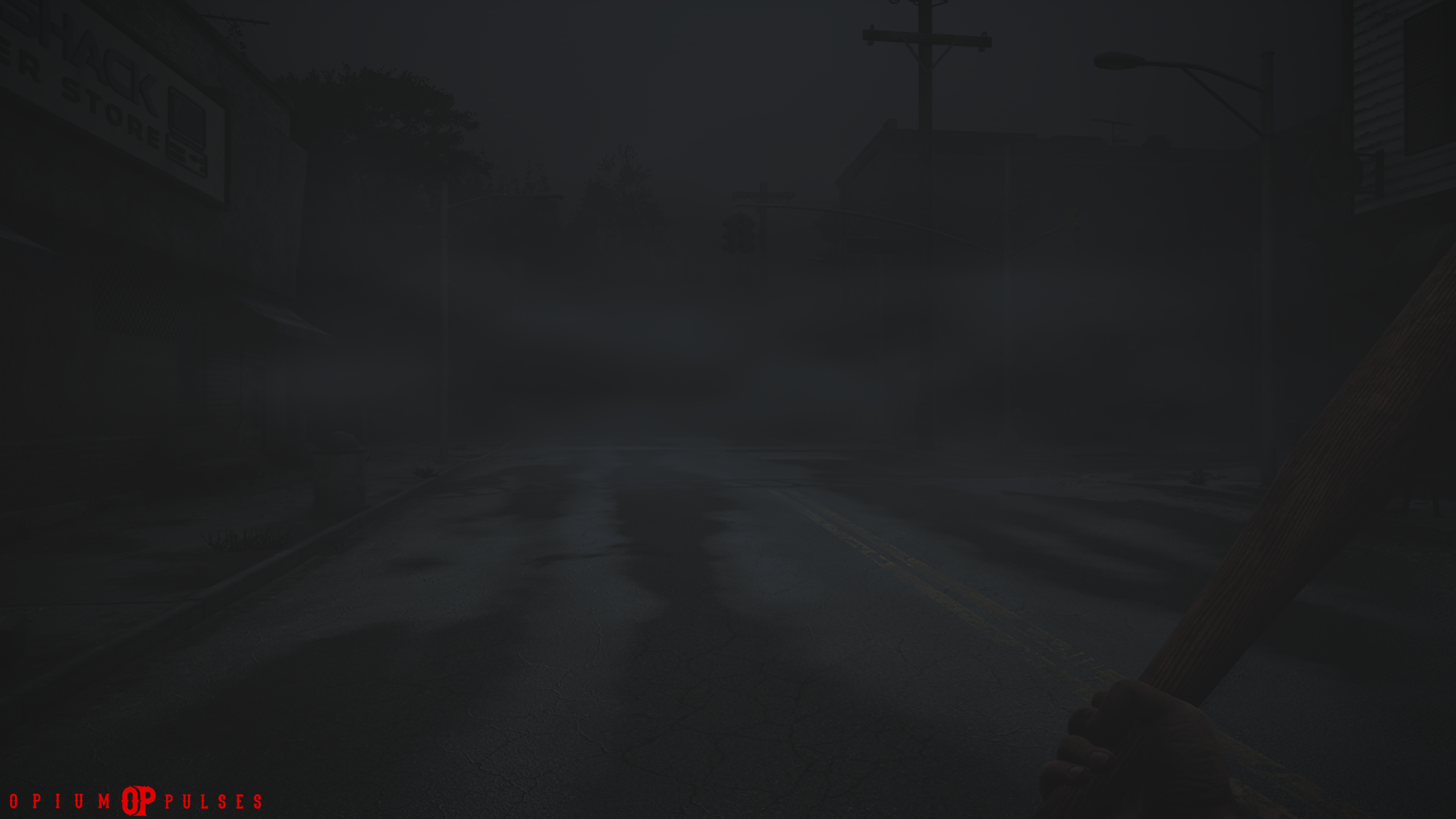 The town of Pine Harbor- in it's infinite "Advanced Darkness".
The town of Pine Harbor- in it's infinite "Advanced Darkness".
With curation, however, comes a lovely amount of detail. While the graphics are topnotch, the emptiness and repetition of some of the assets used can really become quite obvious in the outdoors- it reads as needing additional detailing, not as a complete product. It becomes almost painfully obvious against the indoor exploration, where the massive amount of attention to detail really shines. Everything is placed with intent and thought- and you really must be mindful of your surroundings. If scouring every nook and cranny for clues is not your speed, Pine Harbor may be a pass. Missing key elements will be easy for the untrained eye, especially in the “Advanced Darkness” the folks at Vision Forge Team seem to like to use. I find that while the fog and darkness are used to set the tone, it seems like it’s also been used here as a way of pacing. While I personally dislike this method, with the title being in Early Access, I can partially understand this use- though in most cases here, I feel it was unnecessarily heavy handed.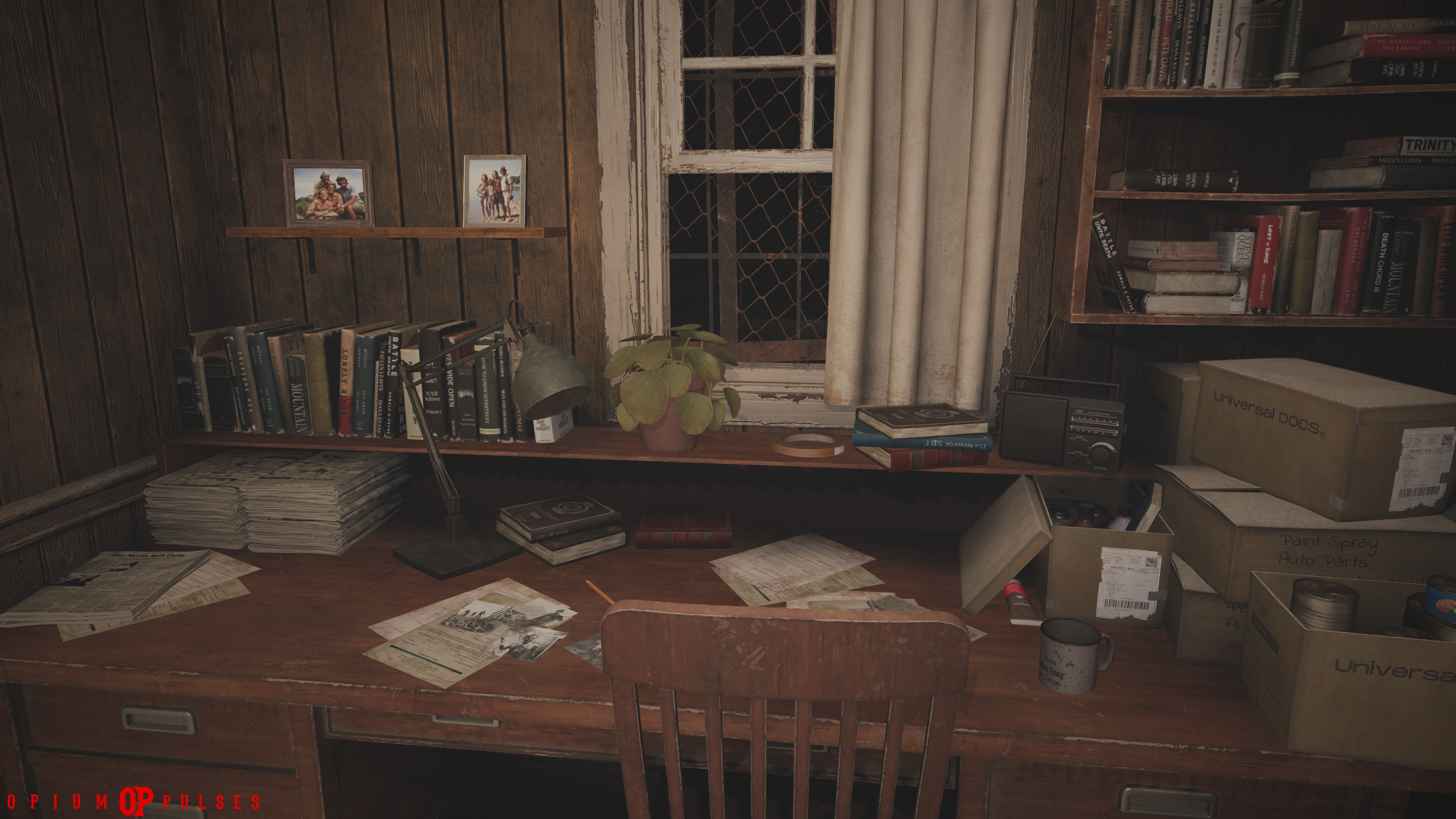 Just a singular example of some of the vast attention to detail.
Just a singular example of some of the vast attention to detail.
To combat the darkness, you can make use of your flashlight or lanterns as needed; clinging to available stationary light sources won’t yield much- several feet away and you’ll be cloaked back into the dark and fog- blinding you yet again to your surrounding environment. And in Pine Harbor, there are things you’ll need to see lurking within in the thick haze of fog, and the velvet cover of night. Daylight is your friend, and vanishes all too quickly, leaving you only a select amount of time to gather resources to fortify where you will stay the night. Gather spare parts, gasoline, and medical care- you’re going to need it, and you don’t have anywhere NEAR as much daylight as you think. While there may be a fleeting few remaining citizens- they’re not the only ones left, and they won’t be all too pleased to see you- day OR night. Your chances of survival are much higher during the day, the denizens of Pine Harbor often roaming lazily about dumpsters, strewn across park benches or perhaps lazily dormant, propped up in a hallway. Quickly and quietly you can often avoid these undesirable daytime encounters. Once your watch breaks the silence of the evening, warning of the rapidly approaching dark, however: Take shelter. Your very life depends on it.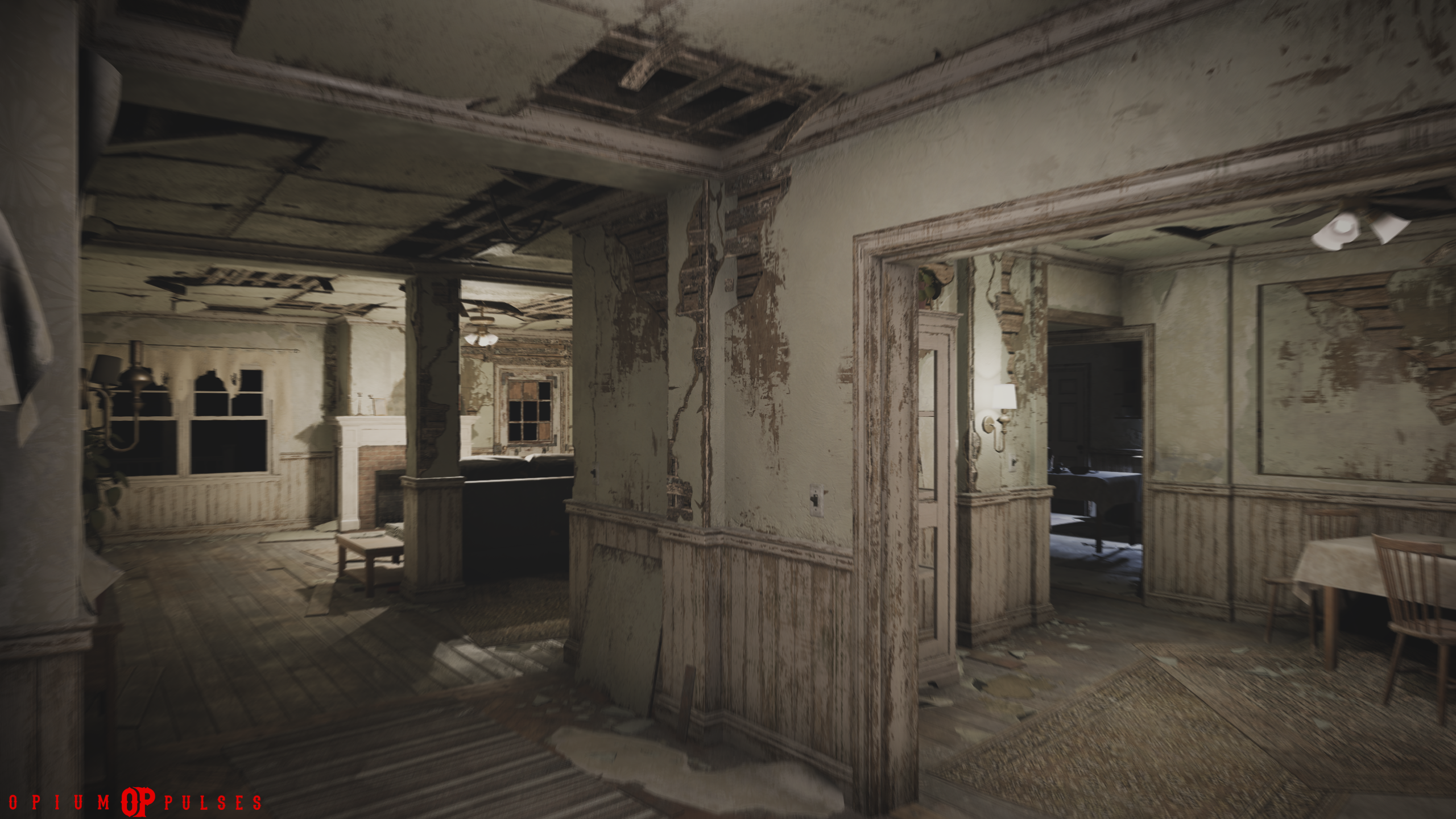 Craft and place barricades as you prepare for nightfall.
Craft and place barricades as you prepare for nightfall.
At present, there is nearly no differential between day and night time enemies. The only bit that changes, is how active they are. While during the day many lay dormant, at night, you are the prey. Mangled, mutilated and mutated- the remaining “life” in Pine Harbor will seek you out. Drawn to noise, motion, and light- think carefully about how and where, you will spend your night. By far, the enemy models are some of the most detailed. Some a chilling mixture of shock-style horror, others playing on a feeling of Uncanny Valley- none area pleasure to behold. Terrifying and grotesque, you can’t help but stare in utter revulsion. It is clear that a lot of attention went into making these monsters- and it shows. While impressive in the scope of detail, I would additionally have to caution that they are beyond mature in nature- so be mindful of any potential audience you may gain while playing.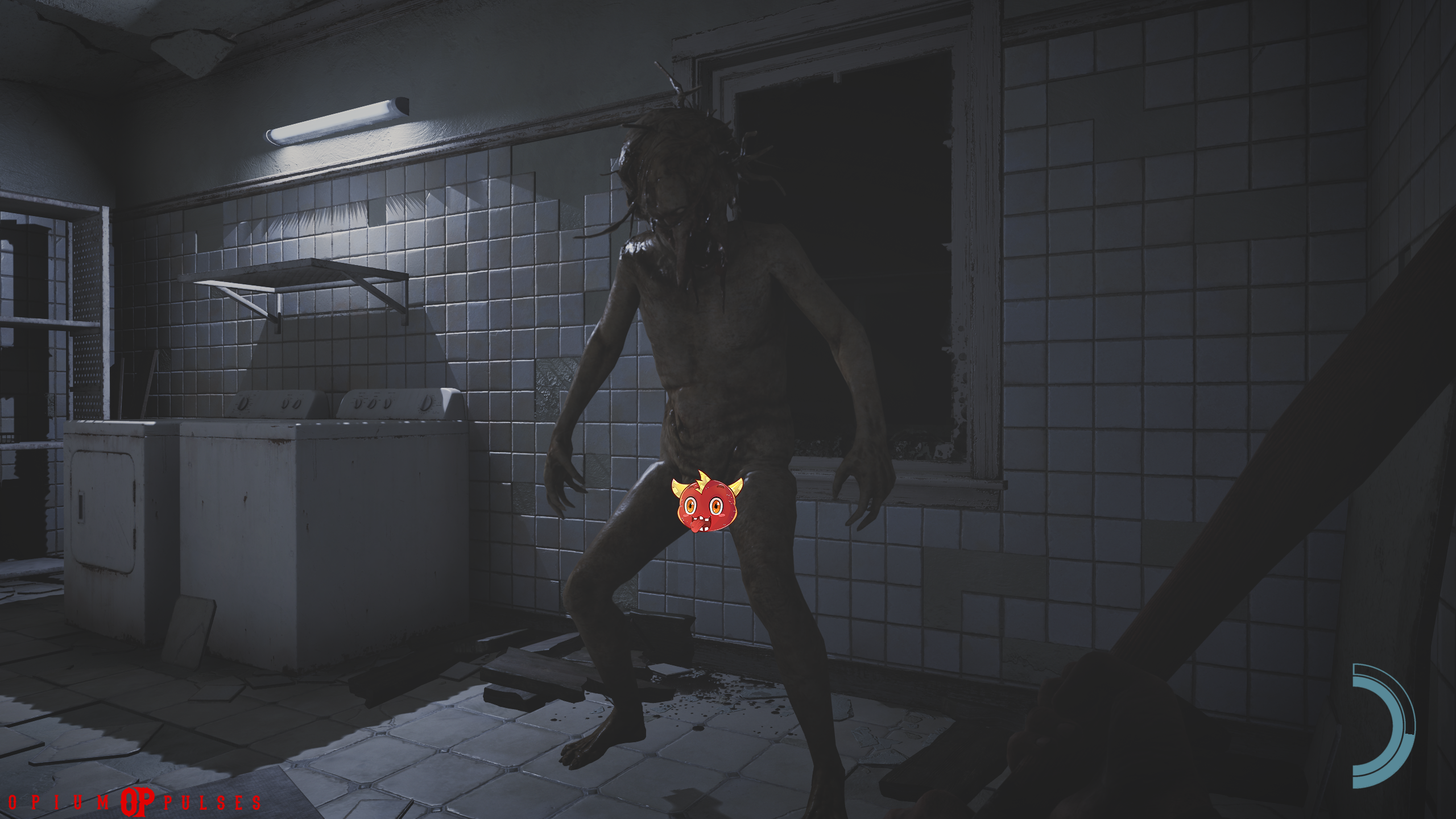 One of the inhabitants of Pine Harbor.
One of the inhabitants of Pine Harbor.
Moving around within the desolate town of Pine Harbor is easy. As mentioned, you have no access to a jump key, nor is there any kind of climb or vault. This feels like a poor oversight, in my opinion, as it keeps the game feeling quite linear. Other than that grievance, the controls feel good- and natural to anyone who has played any FPS Shooters or Exploration games. When using firearms, aiming feels quite lackluster, and looking down iron sights leaves MUCH to be desired- changing no viewpoint, and only “focusing” the reticle. For the most part, other animations look well done, though many are minimal, as item interaction primarily happens within the inventory itself, and is not reflected on-screen (eating, drinking, bandaging wounds). Overall, the controls are exactly what you would expect as an industry standard.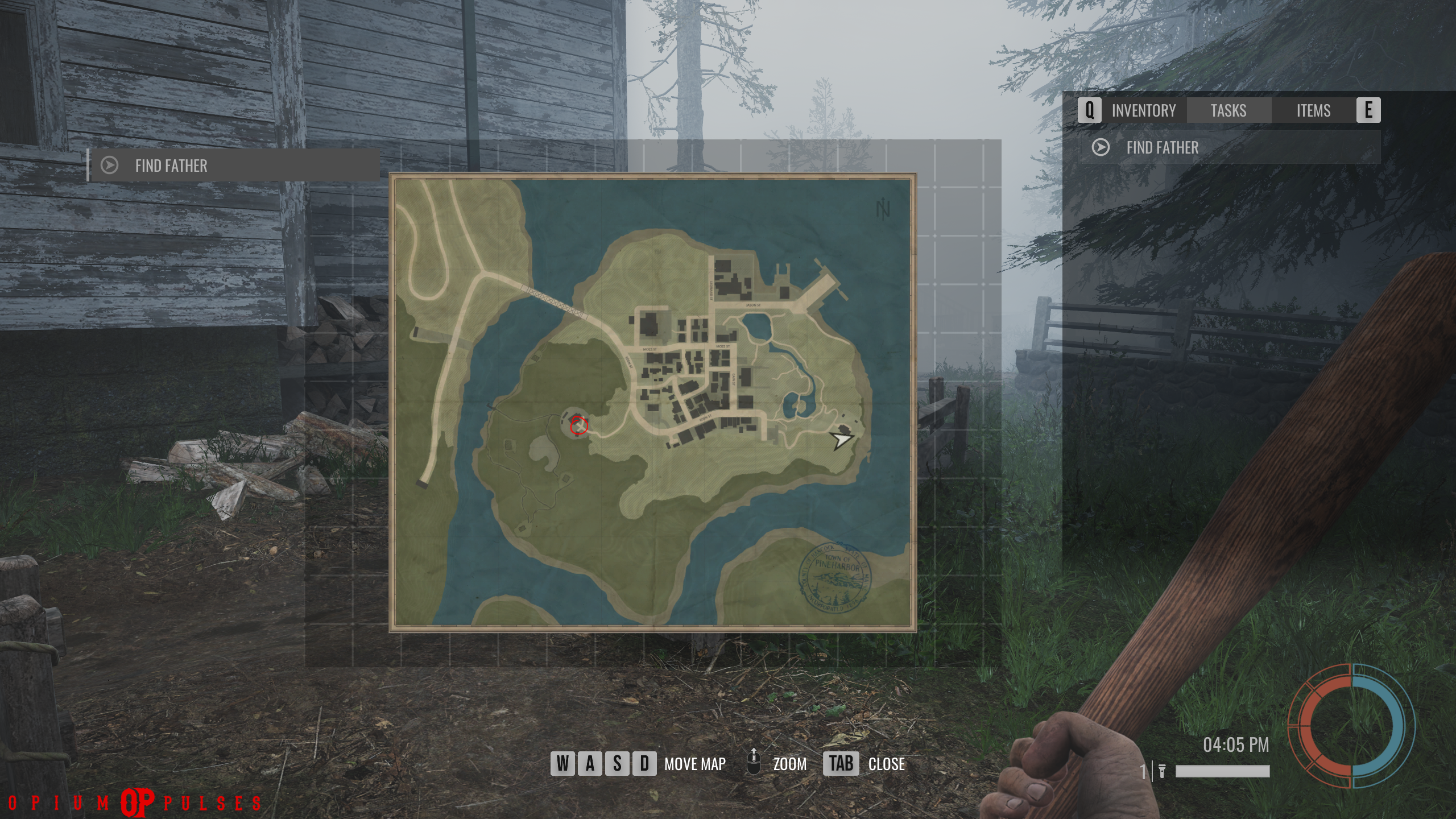 The slick and straight forward UI.
The slick and straight forward UI.
While the controls are up to par (and the current Early Access road map boasts of improvements to come) the story seems severely lacking on most fronts. While you are given a fair chunk at the game start, the trickle of information doesn't exactly leave you chomping at the bit. While the freedom to explore is absolutely there, how open ended it is really leaves solid lore to be desired. The story that IS there seems interesting, in both visual, spoken, and written forms. But the scarcity of it is disappointing. Also to note, there are points through the game where the subject matter can take a turn t’words some heavy, mature themes. Discretion is absolutely advised- and while it is not visually depicted, some of the suggested content may prove more than some are willing to tolerate. The tentative road map for Pine Harbor.
The tentative road map for Pine Harbor.
Overall, in it’s current state, Pine Harbor leaves much to be desired. While, yes, it is an Early Access title that shows a whole heap of potential, it likely should have sat and cooked a few months more before releasing. The small amount of story (with overwhelmingly big implications from what you can piece together) is unbelievably disappointing. While I was initially impressed by the appearance of what I thought could be a near-bargain-priced quasi AAA title, some of the shortcomings such as the voice work, character models, and just the overwhelming feeling of emptiness really muddy the waters. Not all hope is lost, however- as Vision Forge Team has released a fairly thorough road map, though sadly, it looks as though that places a complete product well into Quarter 2 of 2025, with no hope of any possible console release until Quarter 3. There is plenty of room for improvement- and if just this rough Early Access release is any indication, I want to remain hopeful upon full release.
The remaining residents are always happy to lend a hand.
In short, if you’re curious to see what the early stages of a possibly well made indie title are- the price tag is substantially small. The amount of gameplay, depending on how much time you care to spend, can range wildly from a mere few hours to multiple (I could easily see someone speed running this in well under 2 hours). However, if you are looking for a reliably fleshed out game with rich story and characters to boot- I would implore you to stay well within the safe confines of the bus, and simply pay Pine Harbor a return visit later into next year. If all goes to plan, it may be very well worth the wait.
Currently, Pine Harbor is available on PC on the Steam Marketplace. Console release may happen in Q3 2025, though that is tentatively TBD.


